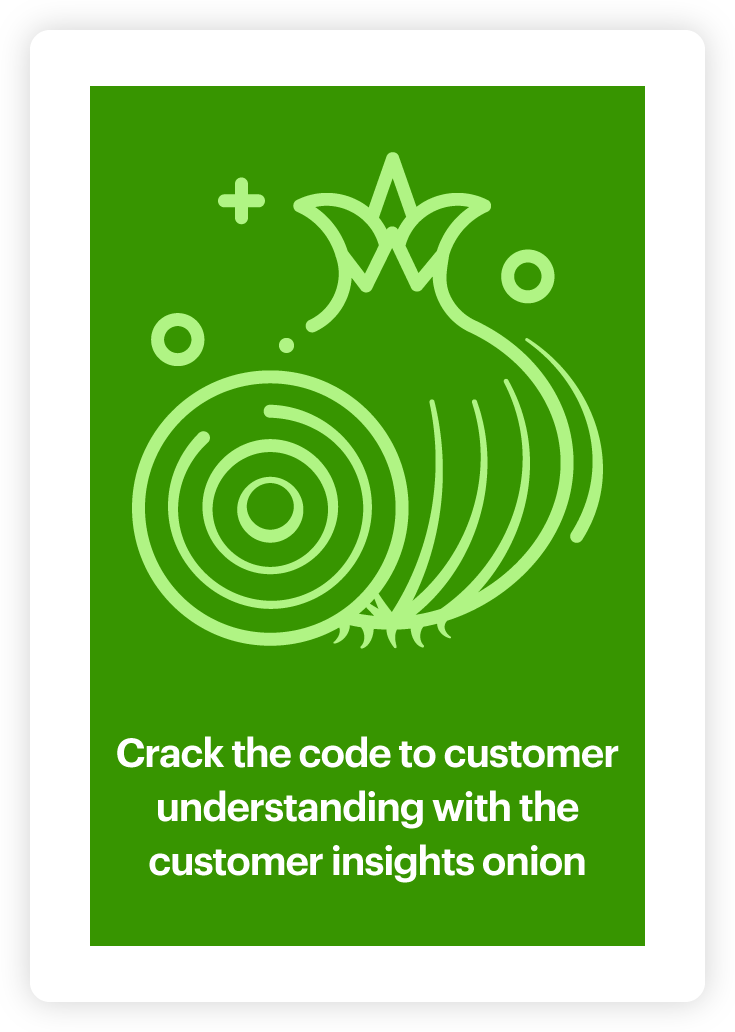The importance of customer insights in marketing strategy

Perhaps it goes without saying, but effective marketing has to resonate with customers. This is why any successful marketing strategy should be based on customer insights. How do we know this? Customer-centric companies that apply customer insights in marketing strategies and other business decisions are 60% more profitable than companies that don’t. To put it simply, customer insights help you take the guesswork out of marketing communications and advertising plans.
To showcase how customer insights are used by marketing professionals, illustrate their importance for good marketing strategies and inspire you with some real-life marketing insights examples, we asked our marketing team at Relative Insight to answer some of the most common questions we get about applying customer insights in marketing:
Why are customer insights useful for marketers?
“There exists this common misconception that customer insights are only useful for CX teams – but this couldn’t be further from the truth. Marketing at the end of the day is about communicating value to target audiences and there’s no better way to understand value than by understanding the experiences of existing customers,” said Senior Performance Marketing Manager David Koke.
That being said, there are so many ways customer insights can be applied in marketing. They can help you:
- Refine buyer personas and target audience profiles
- Understand what’s most important to your audiences
- Tailor marketing communications to reflect the actual value customers receive
- Ensure product offerings reflect customer needs
- Highlight product and service features in ads that truly resonate with customers
- Monitor shifts in customer needs and interests
- Assess strengths and gaps in your existing marketing strategy
- Benchmark against competitors
- Identify whitespaces and new opportunities
- Articulate the effectiveness of existing marketing strategies and campaigns
- Learn how consumer behavior changes during a crisis
And the best part? Establishing all of these marketing best practices and focus areas, while simultaneously acquiring a true understanding of your customers, will ultimately help your business increase revenue and capture growth opportunities.
How do you gather customer insights in marketing?
To gather customer insights in marketing you need to tap into some of the richest sources of customer feedback data, namely: surveys, reviews, social media conversations and online forums. Each of these sources provides a bounty of unstructured feedback you can analyze with a customer insights tool. Survey and review data is especially useful to generate consumer insights because it allows you to correlate consumer opinions with rating scales or demographic data points such as location or age.
Are there different types of marketing insights?
“We generally see three types of marketing insights: behavioral insights, demographic insights and brand perception insights,” said David.
Behavioral insights provide an in-depth understanding of customers’ needs, wants, interests and purchasing behavior and how they engage with your brand – e.g. what categories of products do they like to buy and how often.
Demographic insights enable marketers to segment customer opinions based on combinations of demographic attributes such as age, gender or location.
Lastly, but no less importantly, brand perception insights allow marketers to understand how specific audiences perceive a brand and its competitors, pinpointing unique differences, strengths and weaknesses.
“Of course, it’s natural to see overlap between these three types – particularly with demographic and behavioral insights ” David added.
What are some marketing insights examples?
A common example of applying behavioral insights in marketing is using these insights to uncover motivators or specific points in the customer journey that result in a sale and tailor marketing strategies accordingly.
“A classic example of a behavioral customer insight for marketing would be, for example, knowing that customers who buy condiments like ketchup and mustard tend to repurchase those items in four-month intervals. An insight like this could inform a loyalty strategy to provide discounts on premium products in those categories according to these intervals,” said David.
Demographic insights, on the other hand, help you hone in on the unique characteristics of different target audiences to pinpoint similarities and differences between different customer groups and discover specific words and phrases that resonate with each of them. Equipped with that knowledge you can develop targeted marketing campaigns that truly appeal to each of your buyer personas.
Here’s a use case for illustration: we used Relative Insight to compare how people following plant-based diets talk on social media vs. how popular vegetarian food brands speak about their products. With this type of analysis, we were able to find out whether brand marketing content aligned with user-generated content or, in other words, whether brands and consumers were speaking the same language.
When it comes to brand perception insights, marketing teams can use the knowledge they acquire about their own brand and their competitors to leverage market gaps and develop marketing communications that reflect what makes their brand stand out. At the same time, they can implement necessary improvements to gain or maintain an edge over the competition.
On the topic of competitor benchmarking, Marketing Director Jessica Lewis recalled a piece of brand perception analysis that “examined social conversations during Paris Fashion Week to understand how audiences spoke about the three iconic French designers Hermès, Balmain and Givenchy. The insights we found were used to articulate the impact of their newest collections and ad campaigns, while also giving them a deeper understanding of their competitors.”
Customer insights: The missing piece to your marketing strategy
Thanks to our marketing experts at Relative Insight you now know why customer insights are essential for any successful marketing strategy. From testing campaign effectiveness, crafting marketing communications that resonate with customers, to leveraging a brand’s strengths and weaknesses – customer insights in marketing will allow you to effectively tackle all of these challenges and truly understand your audiences.
Ready to boost your marketing strategy with customer insights? Take a look at some of our other customer insights examples for businesses or book a no-commitment discovery call to learn more!
